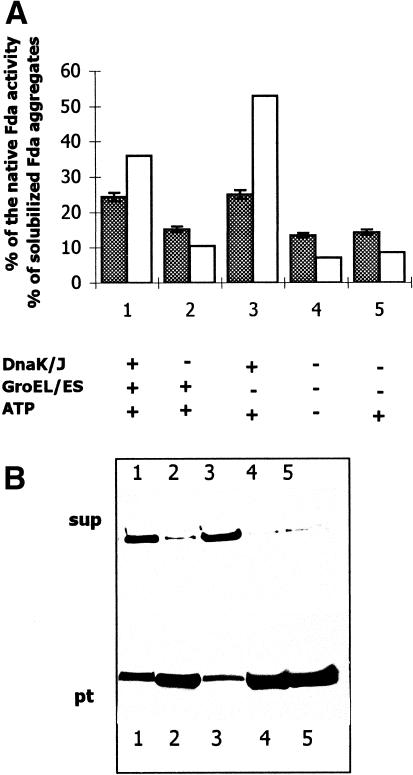Fig 3. The effect of DnaK/DnaJ and GroEL/GroES chaperone systems on the protection of Fda from thermal aggregation in vitro. Fda in Tris buffer was first preincubated at room temperature for 10 minutes in the presence of the Hsps (as indicated below the figure and in molar ratios as given in “Thermal inactivation and reactivation of Fda in vitro”), then inactivated at 55°C. After the denaturation, the aggregated protein was sedimented. The supernatants and the pellets were used for Fda activity determination (A, shadowed bars). The pellets did not contain the Fda activity. For estimation of the solubilization of Fda aggregates (A, open bars), the supernatants (sup) and the pellets (pt) were also analyzed by Western blotting (B) with the anti-Fda serum followed by scanning densitometry. The reactions were carried out 3 times, and the deviation in the values was ±5%

An official website of the United States government
Here's how you know
Official websites use .gov
A
.gov website belongs to an official
government organization in the United States.
Secure .gov websites use HTTPS
A lock (
) or https:// means you've safely
connected to the .gov website. Share sensitive
information only on official, secure websites.
